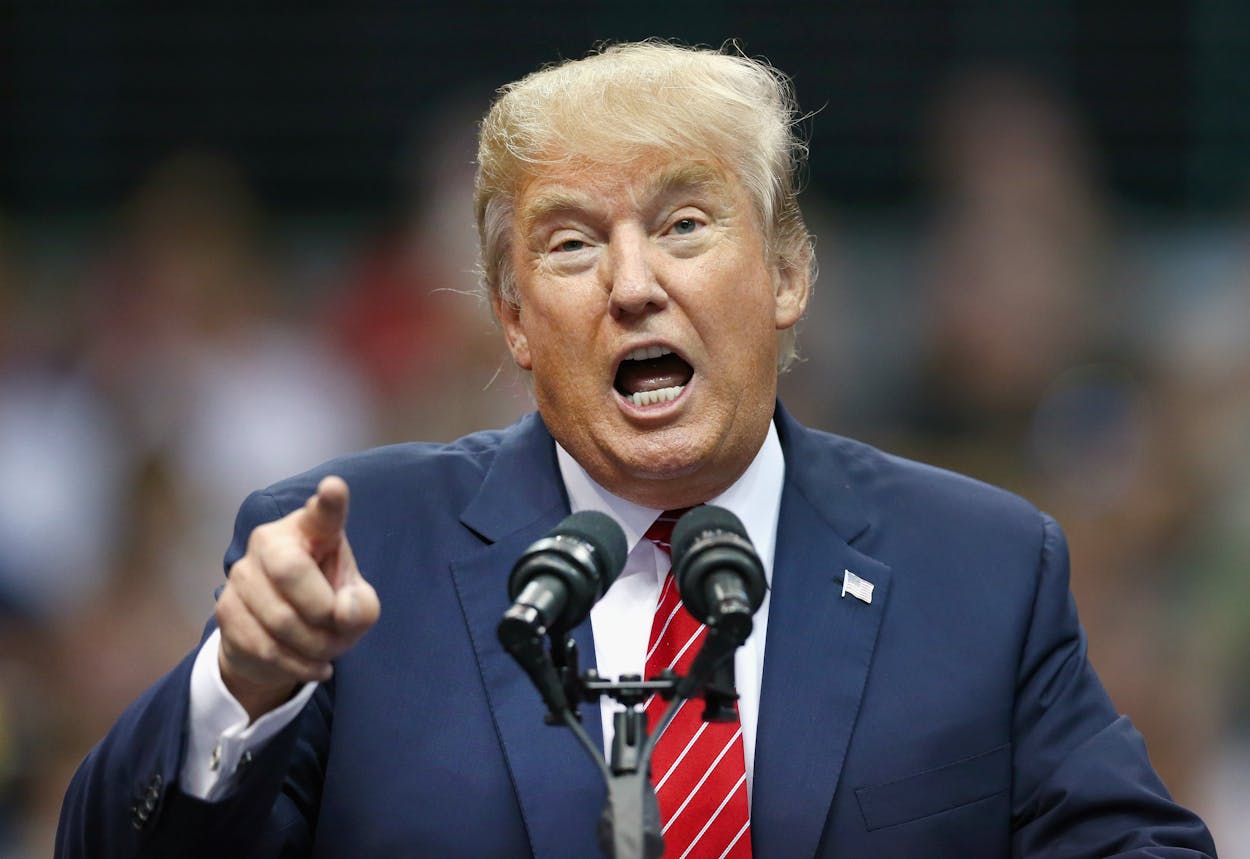Donald Trump, the Republican presidential nominee, is en route to Texas today for fundraisers in Fort Worth and Austin, as well as a rally and a town hall in the latter. The rally in Austin has puzzled the local community, since the state’s most famously blue bubble is hardly a hotbed of radical Trumpism. Personally, though, I’m more intrigued by the town hall scheduled for this evening. The event will be hosted by one of Trump’s greatest admirers, longtime Fox News host Sean Hannity, and should therefore be a safe space for Trump to at long last reveal his plans to address illegal immigration and border security—two issues of great interest and importance to Texans.
Trump’s enigmatic ideas about illegal immigration have received a lot of attention since last weekend, when reports emerged that the candidate had, at a meeting with national Hispanic leaders, declared his intention to take a moderate approach to the unauthorized immigrants already in the country. That would, of course, appear to be a comic reversal of the stance he declared last June, when he announced his bid for the presidency with a speech that was largely focused on immigrants from Mexico and the various threats they supposedly represent to American jobs and safety, which he warned an audience in Ohio about as recently as yesterday. Trump has, however, vigorously rejected the idea that he is flip-flopping on the issue. And in fairness, it does seem that none of his proposals are ultimately rooted in coherent thought or principled convictions; that being the case, it may actually be unduly draconian to accuse Trump of having held any positions in the first place.
What really intrigues me about this evening’s town hall, however, is Hannity’s promise that Trump will explain how he plans to secure the border. Of course, we already know that Trump says he wants to build a wall. But for more than a year, we’ve lived with the mystery of whether that means Trump wants to build a literal wall, like the Great Wall of China, which he has repeatedly referenced as a role model in this context, or perhaps it’s a “virtual wall” that utilizes cameras, sensors, and drones to detect crossings. (A virtual wall might also include more strategic fencing, of the kind that already exists along parts of the border, in Texas and elsewhere.) In other words, is “the wall” a metaphor for the kind of border security apparatus that already exists? In which case Trump means to continue Barack Obama’s border policy, albeit “with a lot more energy,” as he put it yesterday.
For those of us in Texas, this is a particularly intriguing question. Our state makes up more than half of the United States’s southern border with Mexico, and per the 1848 Treaty of Guadalupe Hidalgo, our border is a river, the Rio Grande. As I noted on Fox News on Saturday—to the annoyance of many Trump supporters who weighed in online—I find the metaphysical ambiguity troubling. If Trump is indeed proposing a physical wall like the Great Wall of China, the implication is that he either wants to block our state’s access to the Rio Grande—which is an important waterway in addition to being a border—or, perhaps, to drain and pave it. At last check, the Texas-Mexico border is still a river. What does Trump plan to do to it? It would be nice if an answer to that question were forthcoming.







